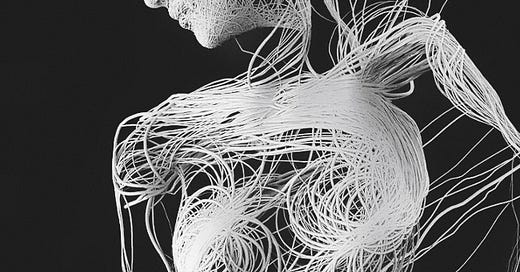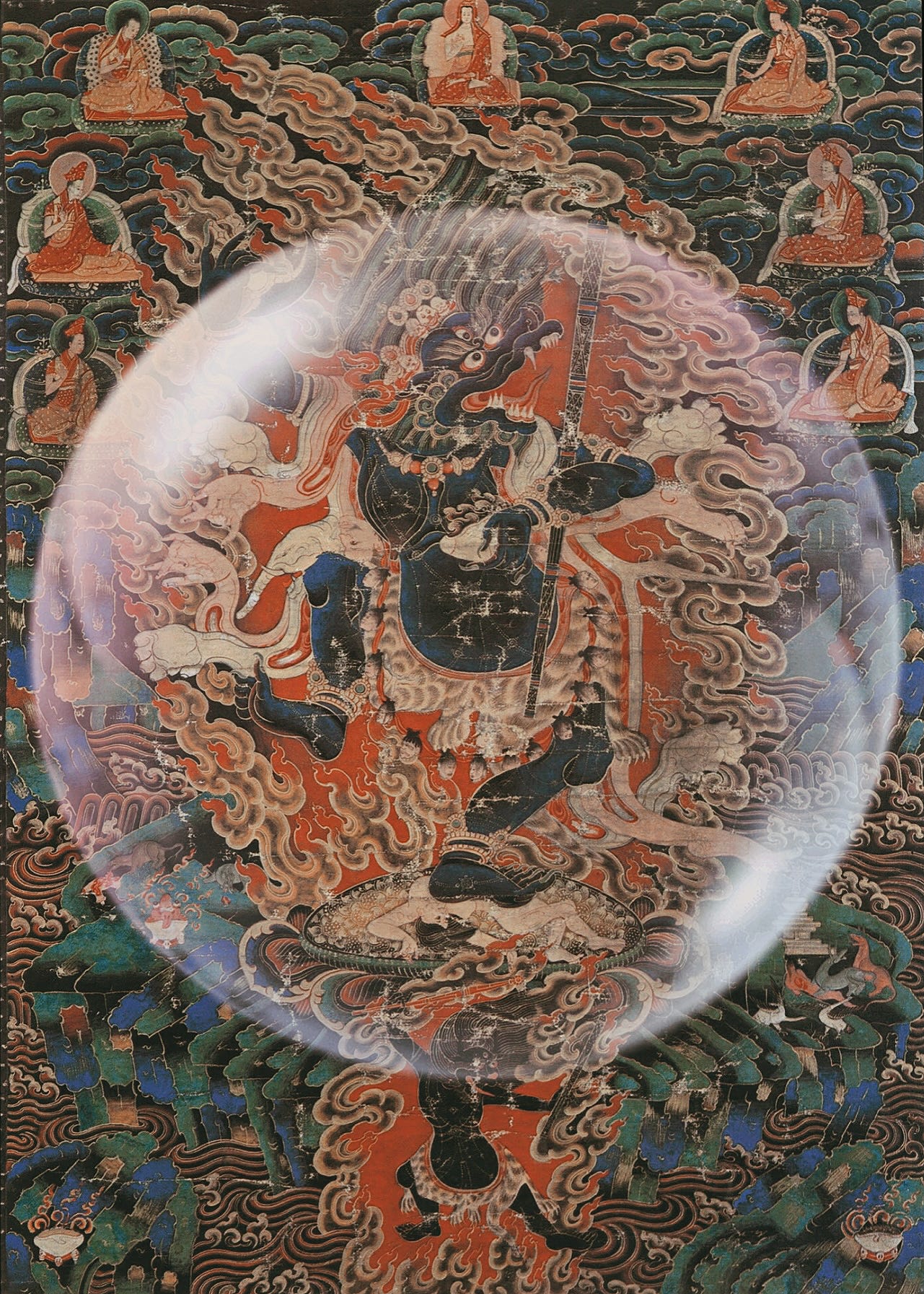Becoming a Programmer to Crack the Samsara System
Don't Just Live in the Application Layer of Samsara.
The content I'm sharing today integrates knowledge from mathematics, technology and other fields. The materials are from my teacher's work, I hope to deliver these concepts with clarity, and may this exploration of truth inspire greater passion in all of us. Let us begin with a preface:
What Exactly Is Religion?
It is humanity's collective inquiry into the ultimate nature of life:
Does existence span multiple lifetimes?
If limited to one life, spiritual practice becomes meaningless
Only by affirming rebirth can we investigate what determines future existences
What governs subsequent lives?
What shapes the experiences, lifespans... all conditions of future rebirths?
Is liberation possible?
Can suffering be truly transcended?
If so, how?
Religion is precisely the exploration of these questions.
—Neo Shakya
🔔The following content is excerpted from Neo Shakya’s teachings on the Dharma.
Today's Sharing Content:
Section 1:
The Difficulty of Learning Dharma Without Emptiness Insight
Before we attain some genuine insight into emptiness, the process of learning Dharma is difficult. But at the very least, we should establish this mental framework: when what we're studying feels too abstract, that's precisely where we need to focus our efforts. Why?
Because the Dharma itself isn't inherently existent.
The feeling that the teachings seem abstract actually arises from our own innate tendency toward "grasping at true existence".
Section 2:
Common Misconceptions About Buddhist Study
A lot of people studying Abhidharma or similar texts feel like, “This is just playing word games. What’s the point? How does this relate to practice? Debating scriptures indoors all day seems artificial." This reaction is natural when the activity feels unreal.
But spiritual practice is fundamentally about mental cognition, not sensory perception.
Enduring physical hardship alone may create little mental transformation. Of course, mental cognition isn't completely independent from sensory experience - physical suffering may cause some mental changes, but this differs from the realization born of genuine practice.
The Dharma is wisdom. If your practice relies solely on sensory input—what you see, touch, or feel (cold, heat, hunger)—that is definitely not genuine spiritual cultivation.
True practice operates in that "hidden dimension beyond perception, outside your sensory world". Those with wisdom will recognize this.
During study, many experience this sense of abstraction—feeling you're merely discussing how concepts are established: “How does the conceptual mind perceive this? How is it designated?” That’s all.
This very sense of unreality reveals the Dharma’s ultimate truth: it does not exist inherently.
Section 3:
The Computer Programming Analogy
The outermost layer we interact with is the application layer—where concrete functions manifest. We buy computers precisely for these applications: opening files, viewing content, writing, drawing... These feel "real" because they deliver tangible value.
Now you want to build a supercomputer - to achieve liberation from all functional limitations, to obtain a flawless system. These current functions are all limited (samsaric), so how does one attain flawless functionality? You must investigate the layer beneath the application layer - how are these applications actually implemented? Only by researching deeper can you break through.
When you delve deeper, it no longer appears as it does now. Those concrete application functions disappear, transforming into what seems like incomprehensible language - unless you're a programmer, you won't understand.
How is this function module implemented? Say I want to make this text bold - how is that achieved? It's done through three lines of code that appear nonsensical to you, just like how Dharma study seems incomprehensible when you're shown the underlying 'code' rather than surface explanations.
Going further, the code does have logical structure that can be analyzed - with training, one might comprehend it. But does this code directly become the function?
No. Code itself is still an interactive layer for humans. Beneath the code you need a compiler - this compiler language then translates everything into even more fundamental machine language.
When you examine what compiler language actually is, even regular programmers can't understand it, only compiler specialists can. An average programmer just knows: “I write three lines of code to implement this function, and the compiler handles how to compile it.”
But how do we verify correctness? There's something even more fundamental beneath this. When that layer manifests, it becomes even more incomprehensible - tracing further down to the circuit level: “how do the electrical pathways work? What is this 010001...?”
Isn't this just electrical signal transmission? You're giving it electrical pulse instructions - these instructions are virtual. Why? Because they don't perform any concrete function, nor contain clear logic. What is 0100... really? It's just a signal, a state difference - nothing more than a distinction.
This is exactly how our conceptual mind operates - by exclusion: “Not this, but that.” You must choose: 0 or 1? In philosophical debate, you either “accept” or question “why?” - a binary selection.
This process appears abstract, because we've lost the visible connection between the code (0100...) and the actual red text output. What we perceive as concrete (the red color) feels real, while the underlying code (00010) seems intangible and disconnected.
True spiritual practice works at this fundamental level. No amount of brute force works - you can't just bend reality!
If I keep desperately vowing “Turn red! Turn red!” without writing those three crucial lines of code, no amount of prostrations or prayers will make the text red.
The function simply won't execute without actual underlying adjustments.
Yet vows do matter. Why? Because strong resolve gives you the determination to confront difficult tasks, and through this engagement, wisdom grows. Without vows, you'd abandon the effort altogether - “This can’t be done, I don’t believe this can be achieved—it’s impossible.”
Just like in the era of 286 and 386 computers - could they display red? They were limited to black and white. Black was because the screen was naturally dark; white came from fluorescent dots lighting up. After achieving color screens, you still needed encoding to display different colors. First, you had to be coded for colors—assign values to them.
So what is color fundamentally? For a computer, color is nothing but a string of code - whether you program it as 101 or 001, the computer will simply render whatever hue corresponds to that encoded value.
Section 4: Living in the Application Layer of Samsara
This reveals where we're actually living:
We're stuck in the application layer.
In our mundane existence, we're all trapped in this application layer where everything appears concrete and ready-made.
How did we get here?
Based on which "application" your karma has installed you in - your karmic patterns determine which app you're running, and thus which level of existence you're fixed in.
Now, if you want to transcend this, you need to export your data from here and put it somewhere else—it’s a process of transferring.
So how do we truly achieve liberation?
We must go beneath the surface to discover the fundamental nature behind all phenomena.
🌊Gratitude for your mindful attention. May these insights benefit your practice. The triple world is aflame with suffering, A burning house, perilous and foul— Where birth, age, sickness, death consume, And endless fires of anguish howl. —The Lotus Sutra 🪬Friends, if you feel drawn to the Dharma and have developed a sincere aspiration to study it systematically, please feel free to reach out to me. 🔔 Suggested Readings:
From Prince to Teacher: Why the Buddha Taught the Dharma?
Though Buddhist scriptures are as vast as the ocean, their sole purpose is to guide beings toward liberation (mokṣa) and omniscient wisdom (sarvajñatā). The Buddha never taught what is irrelevant to these goals.
Om Arapacana Dhih
Author: Neo Shakya
Editor: Arwen Candra
To the seekers of truth, let's forge a bond in this shared space!







As someone relatively new to both Buddhism and object-oriented programming, please allow me this space in your comments to unpack a few thoughts. The current buzzword in data science is ‘Extract Transform Load’ (ETL) as we move (or maybe transcend?) from one data type to the next.
I find Neo Shakya’s analogy astute and illuminating. The ‘application layer’ is the samsara in which we currently live, the world of appearances. Here are objects and functions that we interact with daily – most of them predefined by society or culture. In programmer speak, we instantiate these classes (calling values that build our roles, our identities, our desires) and operate on them as if they are inherently real and tangible.
In The Lankavatara Sutra, the Buddha speaks of the mind’s projections and warns against mistaking the constructed for the real. However, The Dharma, like source code, invites us to look beyond this polished surface layer of compiled illusion. To realize that concepts—“self,” “word,” even “Dharma”—are abstractions, pointers. It’s the same logic as the koan “the finger pointing at the moon is not the moon.” In coder-speak, the reference is not the instance.
May we all trace the source code back to the root. Thank you for the exercise in mental cognition.
Namaste 🙏